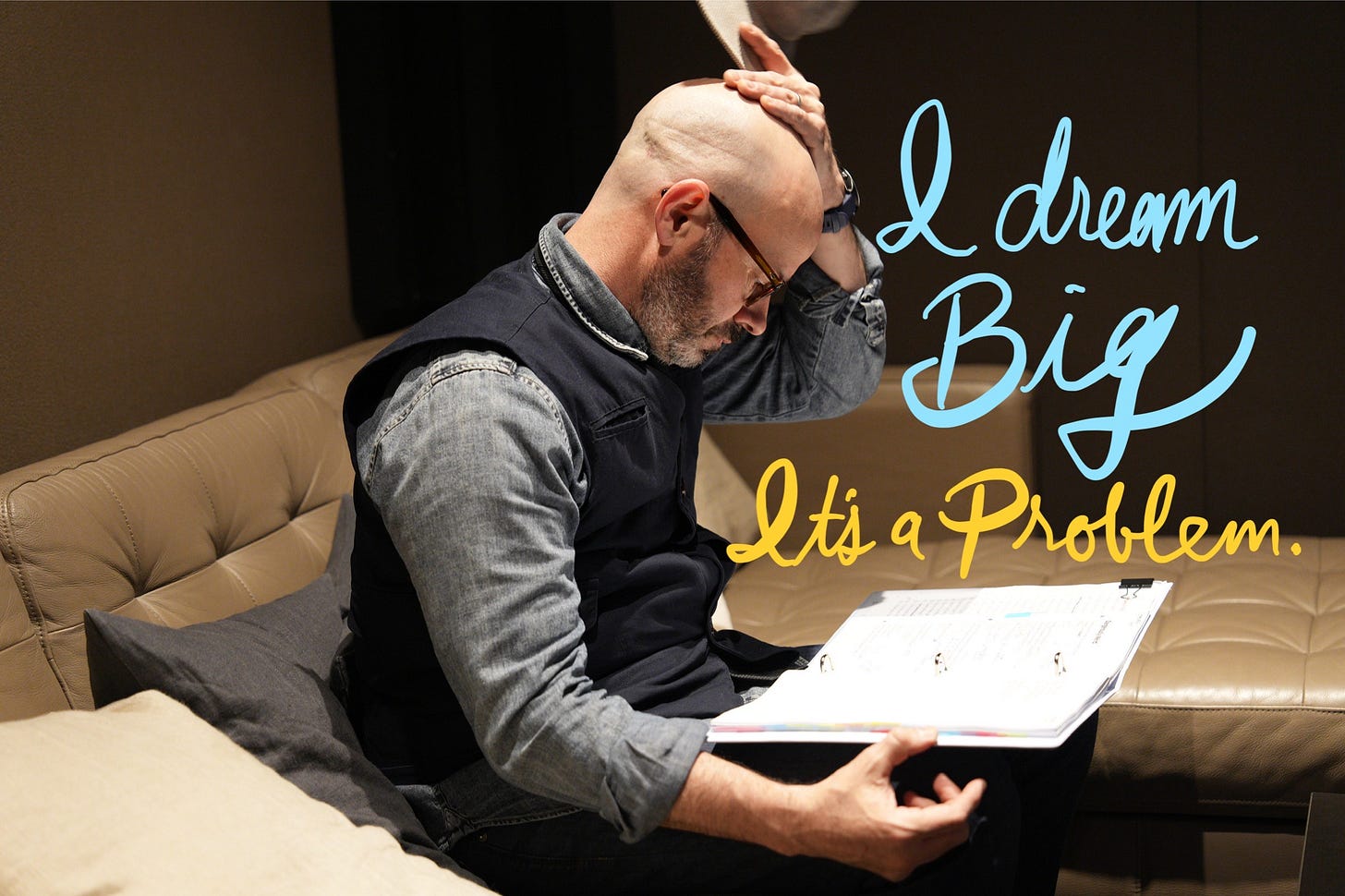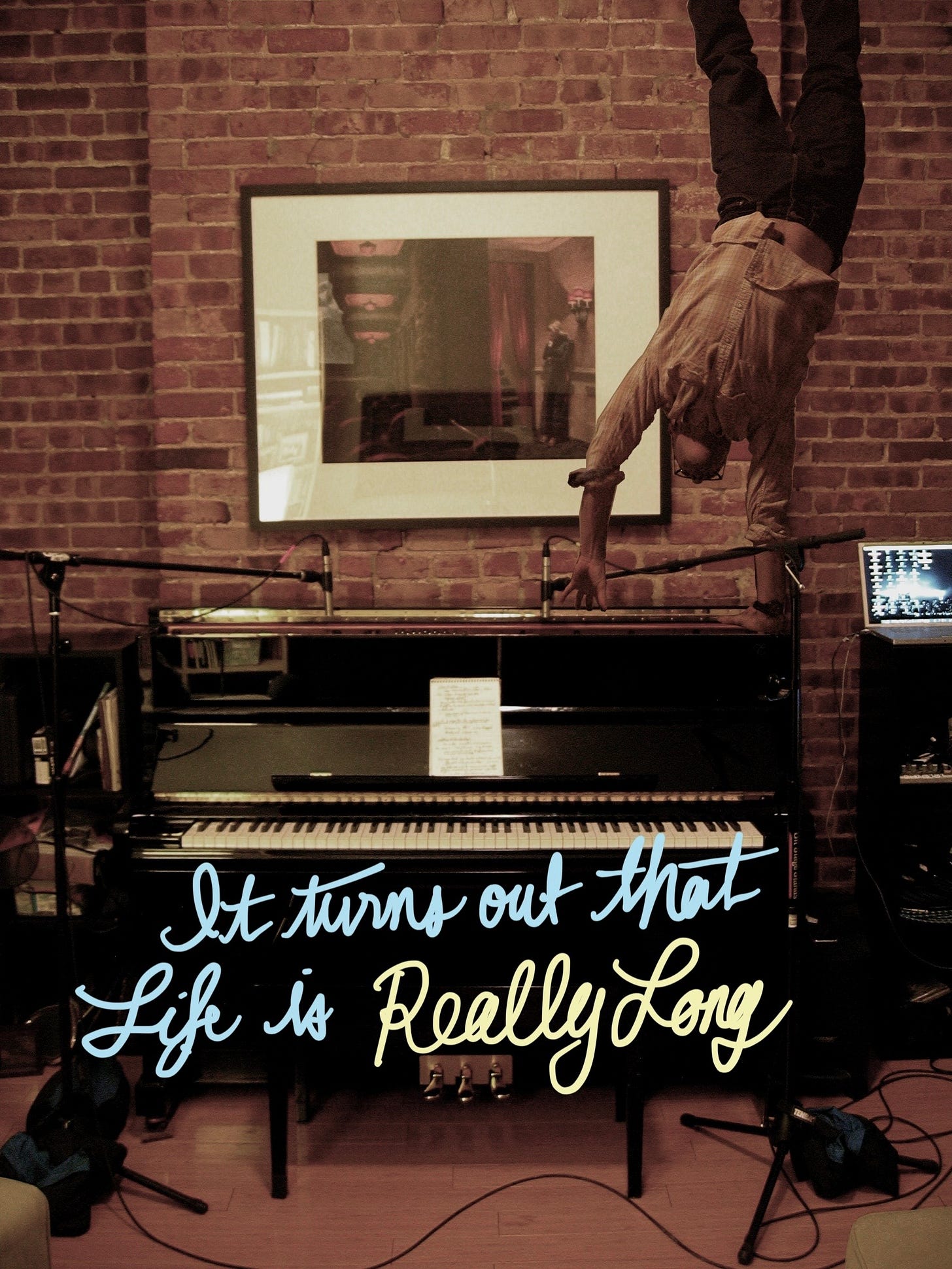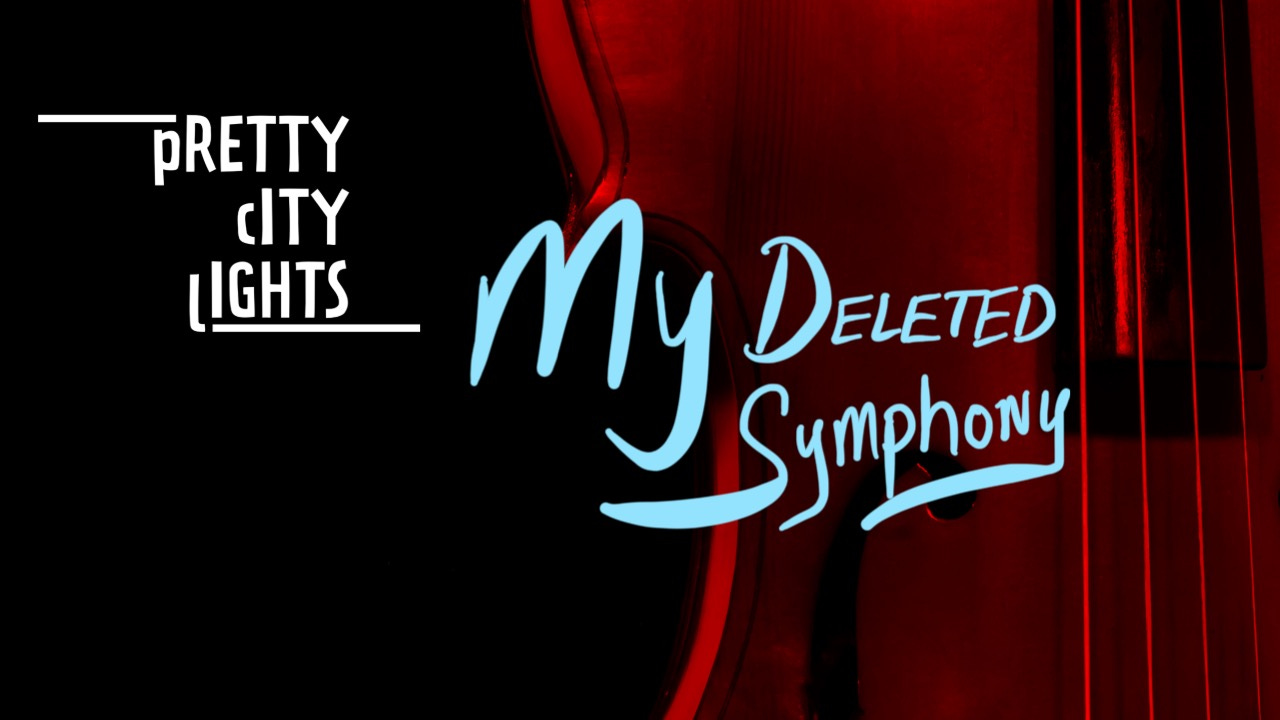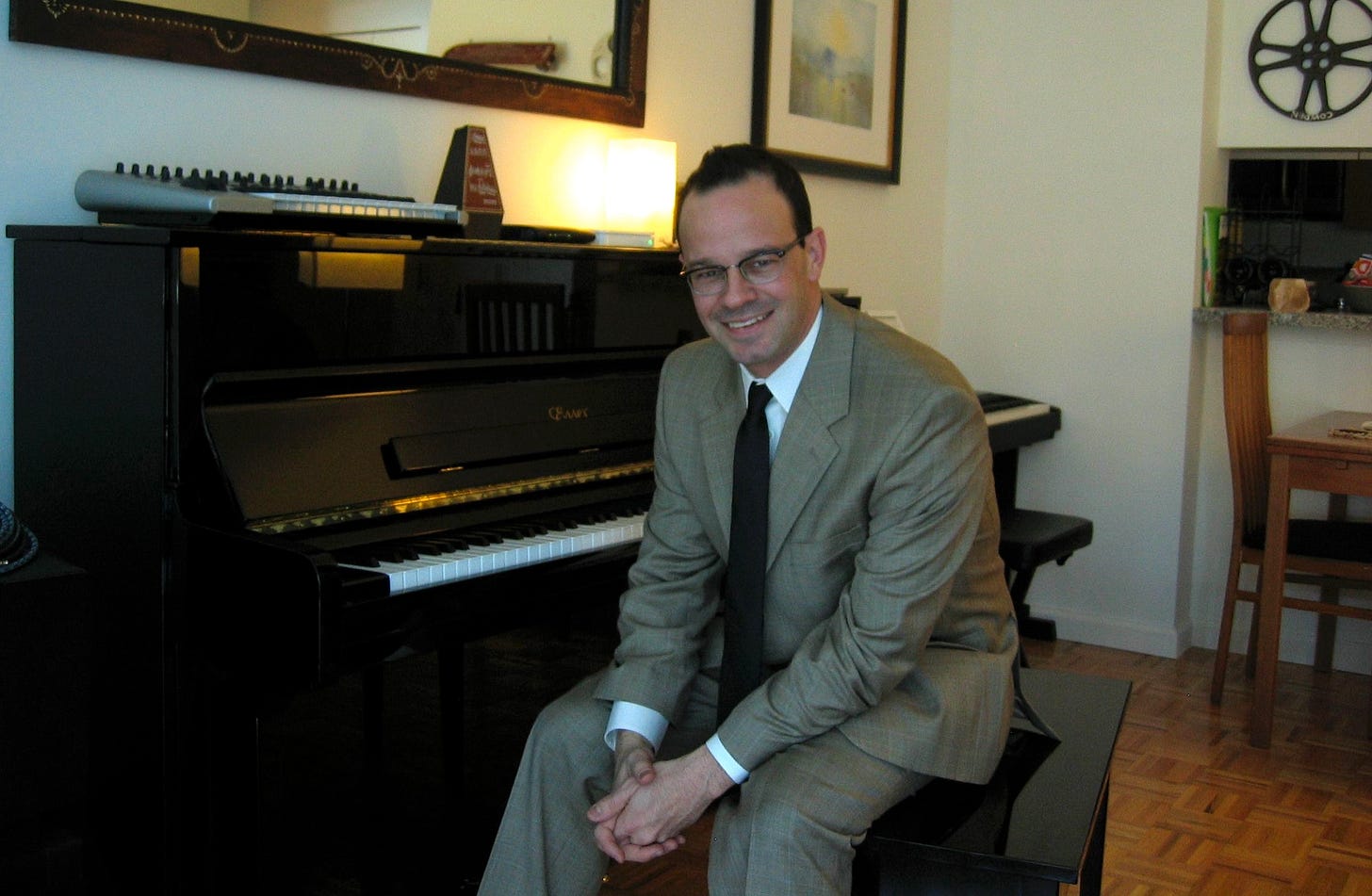My Deleted Symphony - "Summer Oh 8"
I spent 8 months in 2009 on a Midi symphony that I accidentally destroyed. Here are the remnant recordings. The music is absolutely gorgeous. What do you think?
Do you know what Midi is?
I don’t.
Or rather, I didn’t.
I freaking know now! It’s incredible. It’s annoying.
There’s a lot of clicking involved.
Midi does a lot of things.
Here’s what I love about Midi:
I get to be a pretend composer.
I don’t read music.
No shame.
Yet, in 2009, I attempted to do something way outside the scope of my capabilities. It didn’t blow up in my face.
It became a giant knot I didn’t know how to untangle.
Then it vanished.
I accidentally destroyed my own creation.
Well, I destroyed the midi information somehow. I still have a decent blueprint for the music.
Of course, much of it is in my head.
The music is beautiful.
I can sit at the piano and find most of it, but it’s tedious.
In 2009, I could sit and play the entire thing.
Now, I’d have to painstakingly re-learn it and re-build it all.
There’s some joy in that, but for now…
This project is on ice
It’s something I plan to finish.
The pathway to completion needs some clarification, but I’m pretty sure it involves a total rebuild in Midi, now that I understand it.
MY DREAM:
The ultimate goal is a written score, followed by a live performance, and studio recording.
The Symphony Begins…
This audio sketch is 2 sections of the larger work, combined. It’s mostly piano with some orchestration creeping in at the end. The tempos are wrong. It has absolutely no ‘feel’. It doesn’t breathe, and legato cello parts are rendered as clunky stabs. It’s not the worst. You get ‘the gist’ of it. This was the point.
i. “Hospital” - Story Notes (0:00 - 2:10min)
You work opens with unmistakable European ambulance sirens. The cataclysmic events set into motion. The journey begins with a trip to the hospital. The overall notion with this symphony (or tone poem) was to follow a condensed emotion narrative that led up to Summer of 2008.
ii. “A Lock with Only 1 Key” - Story Notes (2:10 - 5:44)
Sometimes the best answer for, ‘what do I do now?’, just sucks.
Imagine a fork in the road. There’s only 2 ways you can go. Both choices suck, but one sucks a bit less. That’s what this section is essentially about. It has a serious of ‘runs’. You can imagine yourself lost in a maze, running down different dead ends, trying to get out. Around 4:00, introduces a minute-long musical sub-plot-preview of part 4, Rage Net(on horns). At 5:00 a heartbeat-like Timpani establishes a ‘wallow in indecision’ section, with a call-and-response aspect. This section was meant to be more elaborate. The back and forth is meant to be repeated by different sections of the orchestra. I’m saddened it’s only 45secs here (5:00-5:44). It’s WAY too fast. The single cello is one of the most beautiful things I’ve ever made - and it’s just performed by a robot here.
The Middle Section
iii. “Doubt” (1:34)
In television editing I learned that the things that people remember most happen at the end. The things they remember second, happen at the start. The middle is where the murk lives.
iv. “Rage Net” (1:53) VERSION 1
Yes, I had a section called “Rage Net”. Fantastic stuff here. I’m so proud of this section, as it’s exactly what it’s described. This playout from the Midi is much better than the one below for ‘feel’. It’s still rushed. This is what my my rage felt like during the worst parts of “Summer Oh 8”. These
iv. “Rage Net” (2:10) VERSION 2
The Midi is messed up here. There’s no swing at all. The timing is atrocious, but the timbre of these fake strings and horns is much closer to what I heard in my head. Huge and menacing. The brass ‘stabs’ end way too early.
Final Act
My intention from the start was to end positive and optimistic. At the time, the notion was a mythical one for me.
I don’t have a proper recording of the ending, but I get pretty close in this 15min acoustic recording. Starting around 8mins in, the run to the end is pretty clear.
A Summary Recording - Acoustic Piano (15 mins)
More about this 15min Reference
Right around February 20, 2009 I made some sort of huge error with the Midi. I think I quantized it or something outside my fundamental understanding of the functionality of the Pro Tools grid escaped me and all the sudden my notes where not in the right places. I couldn’t figure out where i went wrong.
I have this recording of me playing the acoustic piano, which has many elements of where the piece was supposed to go, including much of the ideas already stated. It is a composite edit I made in preparation for putting the sections together. It was never meant for you to hear.
It is not recorded well. It clips a bit and you will hear clicks where I made edits in Final Cut Pro 7. All those edits are lost. In this recording I’m cobbling together a blueprint for the structure.
The ideas for the remainder of the symphony are inside this recording.

The Plan.
The knowledge that Midi made it possible for a dummy like me to ‘write’ music, led me to consider making a symphonic work. From the start, my goal was to…
Create playable audio ‘demo’ version of my tone-poem/symphony to share with others.
I would play all the symphonic parts on the piano, into the computer, then parse out the Midi layers to stings, brass, and woodwinds, and percussion, mimicking performers.
Once I had all the midi ‘notes’ in the computer, parsed out, I could then slow it down and make it more life like by introducing subtle differences in all the performances, moving them off the grid. Eventually, I could have independence between all the instruments and treat them like ‘players’.
Finally, I’d have the computer, ‘spit out the notes’ a final document that an orchestra could deal with.
The Chaos.
My hack composer dreams had job requirements I didn’t possess. I clung to the belief that anyone could do a symphony, if it meant you had music in your head that was specific. I had that!
In order to have musicians perform a finished work, they need the sheet music. It takes thousands of dollars, and you need a playable version of the music to inspire fundraising.
I was well on my way to accomplishing this, when I began to tinker with tempo maps, and moving notes around, that the entire thing got messed up somehow. I didn’t know what I was doing with Pro Tools.
Now, looking back, if I had a clue, I wouldn’t have been using Pro Tools at all for Midi.
The Reality.
Notes: “SUMMER OH 8” Lost Midi Demos.
Below lies the best of my audio exports from Pro Tools, before I accidentally destroyed my work. You will will hear a lot of layered piano. I’m playing all the parts on piano, imagining them to cellos, horns and drums. My intention was to play the parts for strings, horns, and woodwinds all on the piano, then parse their midi ‘notes’ onto individual tracks and orchestrate with the samples.
**This was the second phase of my production. The first phase was getting a basic audio recording edited of my acoustic piano playing. That 15 min audio file is down at bottom of this post.
The Lost Midi Demos
Music can tell a story without lyrics.
In 2009, I was in a lot of emotional pain. I was searching for answers. My work & personal life had capsized. My hair was falling out. I was alone again and renting out a destroyed heart. All my life plans needed rewiring, at age 35.
I suspect many go through this—It’s half-time and your team is losing. You must come up with a new strategy for success. Middle-life disruptions can be sparked by moments of terrible woe—like a death of a loved one. But also, a thousand tiny let-downs can cue a mid-journey blood-let. Regardless, it’s unpleasant as much as instructive.
My boat had been taking on water below decks for years. Eventually, a huge adjustment had to be made, though I really tried to avoid it. For me, the axe fell in the Summer of 2008. At the time, I wanted to ‘tell my story’, but do so in music only.
I plan to never speak about what happened publicly.
It turns out that Life is Really Long.

How I came to write a symphony
I spent much of previous 2 year (2007-2008) working with 16mm film and optical printing. My film, Keep The Home Fires Burning, had been accepted to some festivals. I had composed the soundtrack. It was the one free thing about that adventure. You can read more about this time and watch my short film, here.
I was out of money. I began saving. Going to work and going home to my piano. I was listening to a lot of Mahler, Sibelius, Rautavaara, and Stravinsky. I was excited by music and score. I found myself sitting at the piano for 5 hours, every night after work—wine was involved. I was trying to turn my pain into something productive. Playing the piano was a calming form of escape. I transferred my pain into a story of notes and song parts. I could play and move between these bits effortlessly.
I eventually had developed a ‘song’ with 15-20 different parts. It wasn’t brain activity, it was feeling. But what to do with a 20 min song?
I realized that the music I was playing was the literally equivalent of my experience. I couldn’t speak about it, so I was screaming it out in musical form. I cannot tell you just how specific all these idea were for me. To give you some indication, the beginning starts with European sounding “NEEE-NRRR-NEEE-NRRR” ambulance. You can hear it very distinctly.
“SUMMER OH 8”
Conclusion:
It’s not that this work is ‘gone forever. I can listen to this recording and find the chords on the piano pretty easily. I have a few other exports and raw piano recordings in a folder. So, I could piece this whole project together again.
It would requires months of effort, I believe. I’m itching to get my songs finished, so it’s currently on the back burner.
About the author
Ryan OToole (aka, RYNO) is a skateboarder from Arizona with too many film degrees, who writes songs for Pretty City Lights—a new music project based in Seoul, South Korea. His songs have been described as, "alternative rock for people dying of middle age". Formerly associated with the band, Amateur Blonde, his songs have been featured in television and film - notably, The Walking Dead (S10 Ep21). RYNO is the author of Behind The Lights a freemium substack publication, documenting the Pretty City Lights song & album creation process with the slogan, “watch me make music”.





